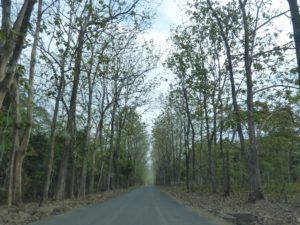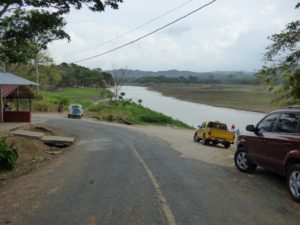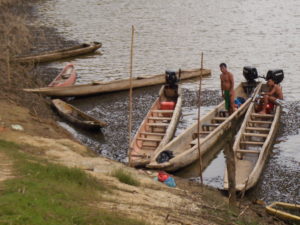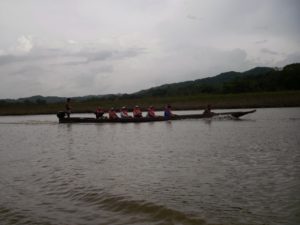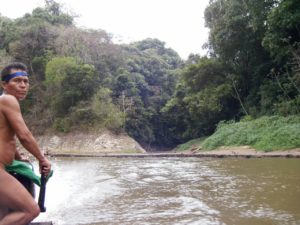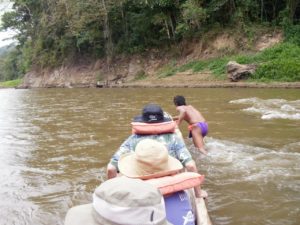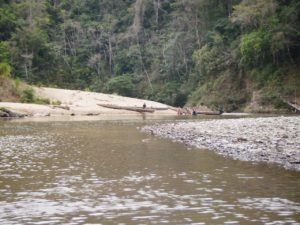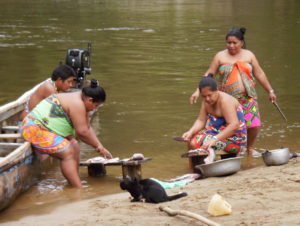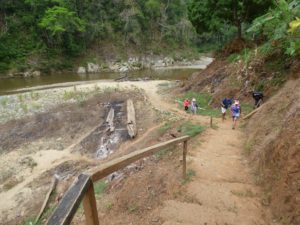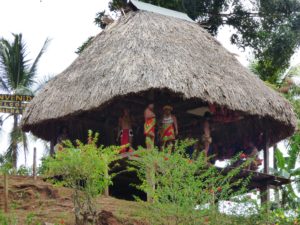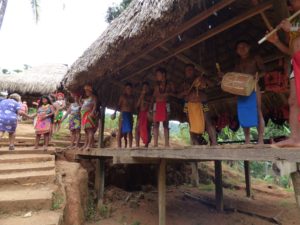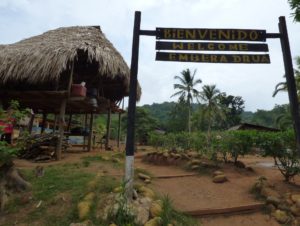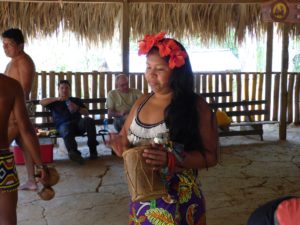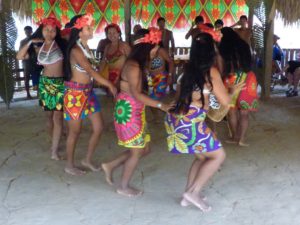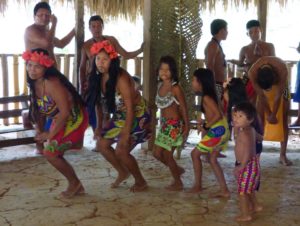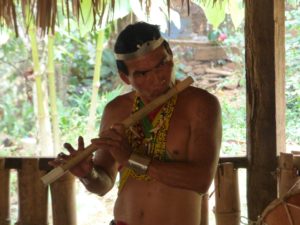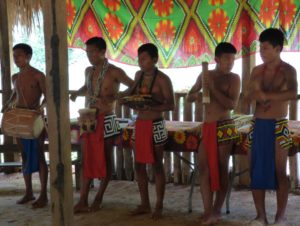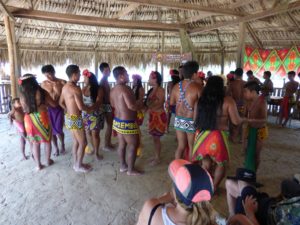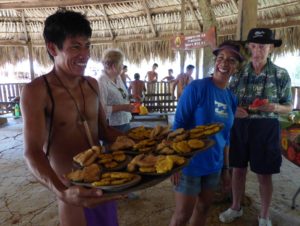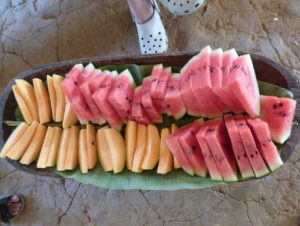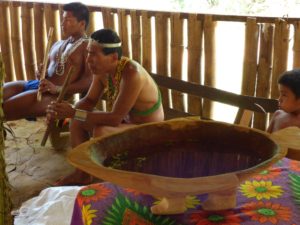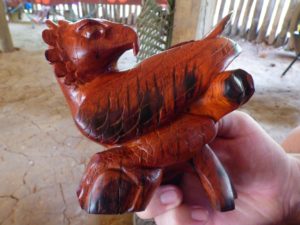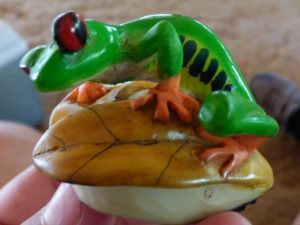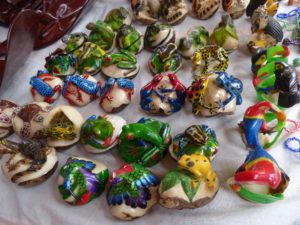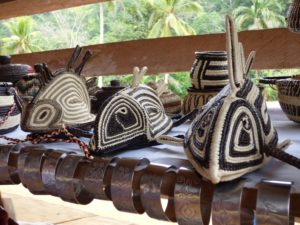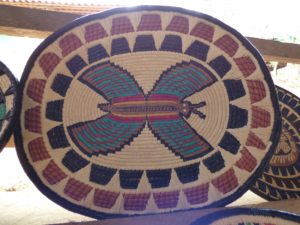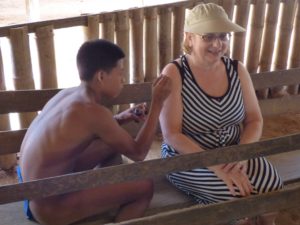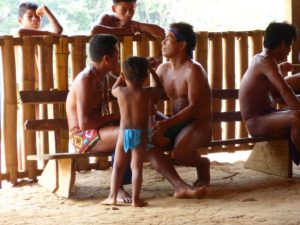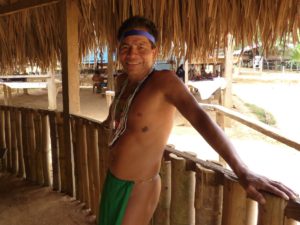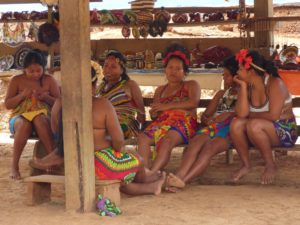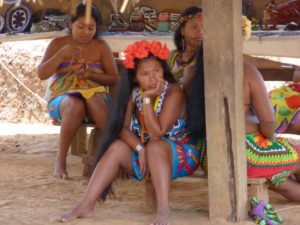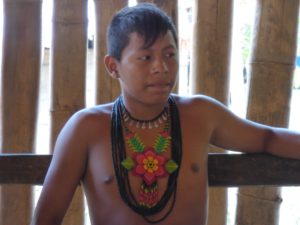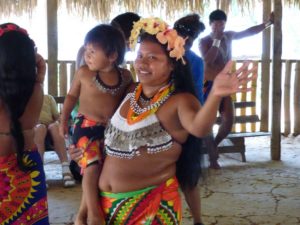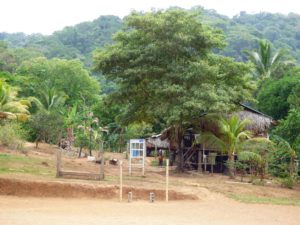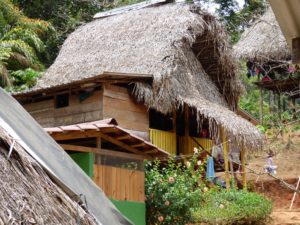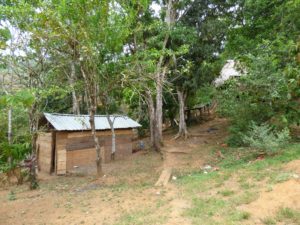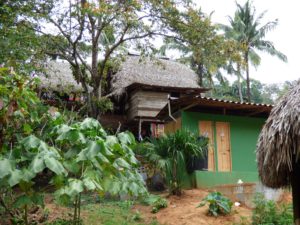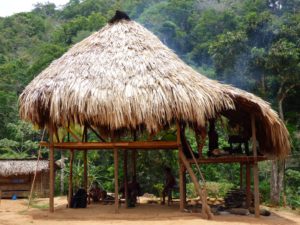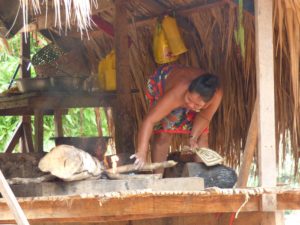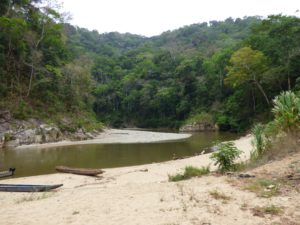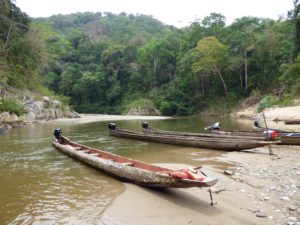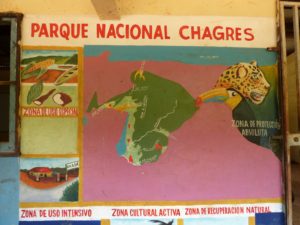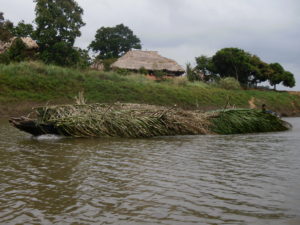Embera Indian Village
Many tour operators offer a visit to an “authentic Indian village” in Panama. Of course the authenticity is somewhat limited when the village is constantly overrun by foreigners, but you will get an idea of what traditional life is like.
We took a tour to the Embera Drua village in 2015 and this was our experience…
The drive into the Chagres National Park is beautiful, and usually takes about an hour, then you arrive at the river bank where dugout canoes are waiting. At the end of the dry season the river is very low, so you might not be able to visit the waterfall that is mentioned in the tour descriptions, and on our trip we ran aground a few times. The boat ride to the Emberas Drua village is usually around 30 minutes.
- The drive through Chagres National Park
- The “port”
- Dugout canoes waiting
- Fast ride
- Access to the waterfall was high and dry
- So were we at a shallow spot
Eventually you arrive at the river bank below the village. The ladies will probably be preparing some fish so you know that lunch will be fresh. There is a bit of a climb up a dirt trail where the villagers are waiting to welcome you.
- Arriving at the village
- Fish being prepared for lunch
- Bit of a climb up the hill
- Villagers waiting to welcome us
The Indians present some traditional shamanic music and dancing
Lunch is served, usually fresh fruit, fish and patacones (fried plantains)
- Fresh fish and plantains
- Fresh fruit
- Finger bowl
You have the opportunity to buy some locally made handcrafts, as well as watch the artists at work. The men do carvings of Cocobolo wood (rosewood) or Tagua nut, and the women weave baskets, plates and masks from palm leaf fibres and do beadwork, all of which they sell for ridiculously low prices. They can also give you a cultural “tattoo” which is painted on using the juice of a jagua nut, and lasts two weeks or more.
The sad story of the Embera is that they were displaced from their original villages by hydroelectric developments or armed conflict in Colombia. The Panama government has given them land to develop new villages, but because it is national park they are not allowed to do anything with it – like grow food or keep animals! Selling handcrafts is one of the few income possibilities.
The men wear loincloths, some of them beaded, and the women wear colourful clothing (traditionally they would be topless).
You are free to wander around the village and meet the locals, and one of the village elders might offer a short hike into the forest to learn about their medicinal plants. You can also swim in the river below the village.
After a few hours you board the dugout canoes for the trip home.
We are not big fans of visiting “authentic” villages like this because they can seem so contrived, but the boat trip through the jungle is beautiful, and it is always interesting to get an idea of how people traditionally live. Of course many of these people now have jobs and the kids might go to school in the city, but they are trying to preserve their way of life.
Even in 2017 they have no electricity and no cell phone coverage at the Embera Drua village. The telephone box you might have spotted in the picture is only for incoming calls.
Lots more information about the Embera People here
